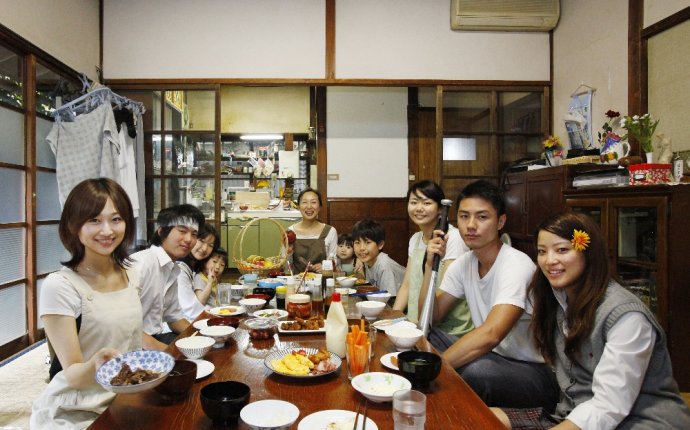
Family life in Japanese culture
 Like many Asian family systems, the Japanese family system was an extended family which included distant relatives as well as the dead. In the earliest times, and certainly with the influence of China, ancestor worship was a strong and vibrant belief which made deceased real, active members of the family. Noble families, and families of the warrior class, placed great value and importance on their ancestors. One of the problems of newly arisen aristocratic families was to ‘find’ sufficiently impressive ancestors who would justify contemporary importance.
Like many Asian family systems, the Japanese family system was an extended family which included distant relatives as well as the dead. In the earliest times, and certainly with the influence of China, ancestor worship was a strong and vibrant belief which made deceased real, active members of the family. Noble families, and families of the warrior class, placed great value and importance on their ancestors. One of the problems of newly arisen aristocratic families was to ‘find’ sufficiently impressive ancestors who would justify contemporary importance.
Ancestors continue to have significance today, a reflection of the importance of the family system itself. Buddhist belief holds that ancestors are able to exert influence over affairs in this world. The spirits of ancestors return to this world at Obon, a summertime festival of the dead. The spirits are fed and treated well to ensure their aid in the future and so that they do not linger after the three-day period and cause damage to the living. Obon is one of the two yearly festivals which bring distant relatives together, the other being New Year.
 An extended family consisted at least of grandparents, parents and children in addition to ancestors. A main or stem family might have affiliated to it branch families. Each branch family at some time might itself, while maintaining its subordinate position to the main family, become the stem family to several branches. Thus, a well-established, well-organized, and rich family could become extremely large.
An extended family consisted at least of grandparents, parents and children in addition to ancestors. A main or stem family might have affiliated to it branch families. Each branch family at some time might itself, while maintaining its subordinate position to the main family, become the stem family to several branches. Thus, a well-established, well-organized, and rich family could become extremely large.
In addition to real familial relationships, families often adopted as “branch families” people who were not related by blood. This kind of branch family was often in an economically subordinate position: perhaps a family of farm workers who depended on the stem “family” for land and tools. The fictive familiar relationship added extra depth and strength to the economic relationship. Theoretically, an entire village might be one large extended family in this manner.
In fact, very few families were organized along the lines of the extended family. Simply put, few were rich enough to sustain or require such a complex system. For the majority of Japanese, even the three-generation family (grandparents, parents, and children) was more of a dream than a reality. Life expectancy was so short until recently that few lived long enough to see grandchildren; certainly few families experienced the pleasures of more than one grandparent until well after World War II when life expectancy reached eighty years.









